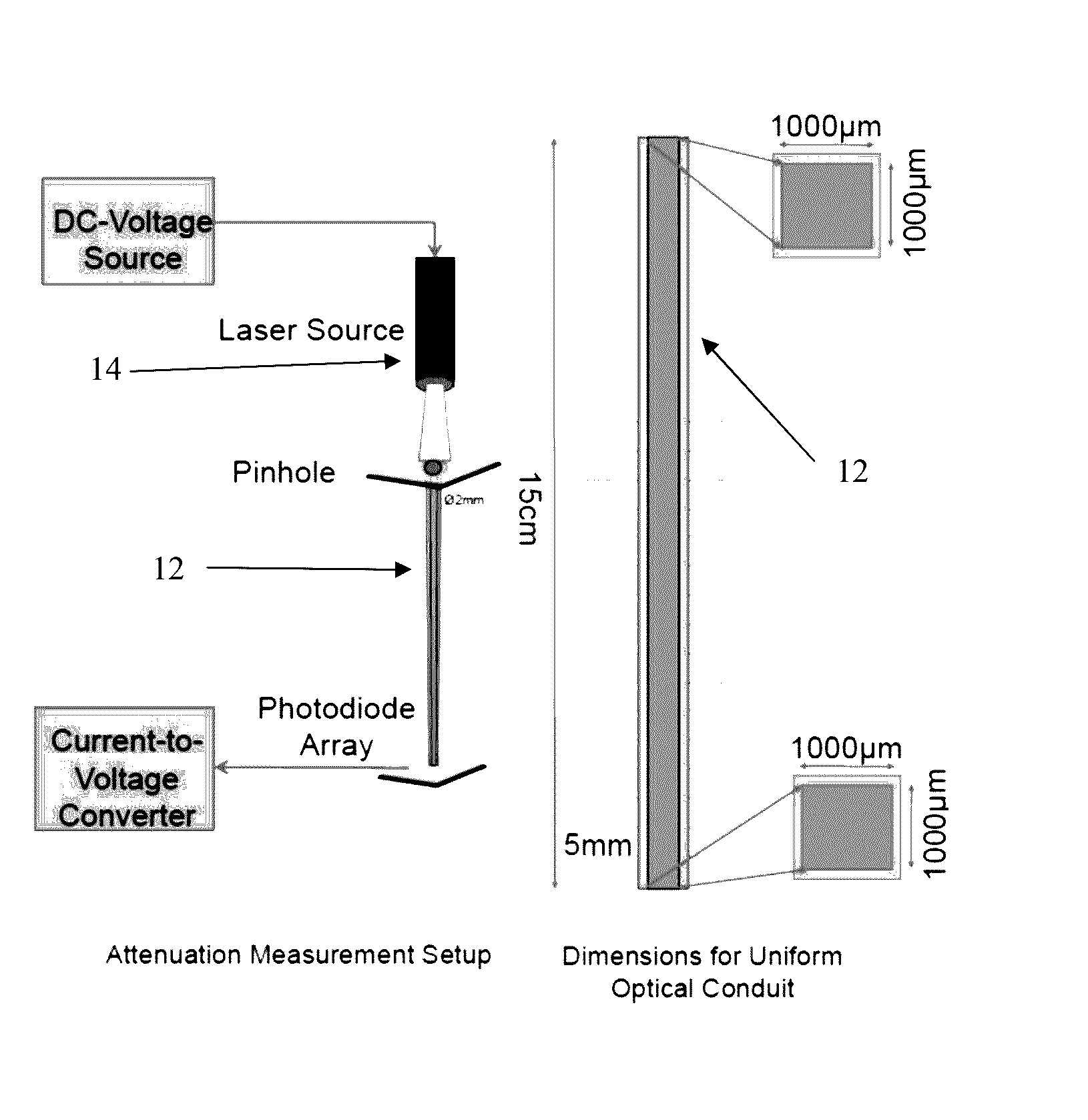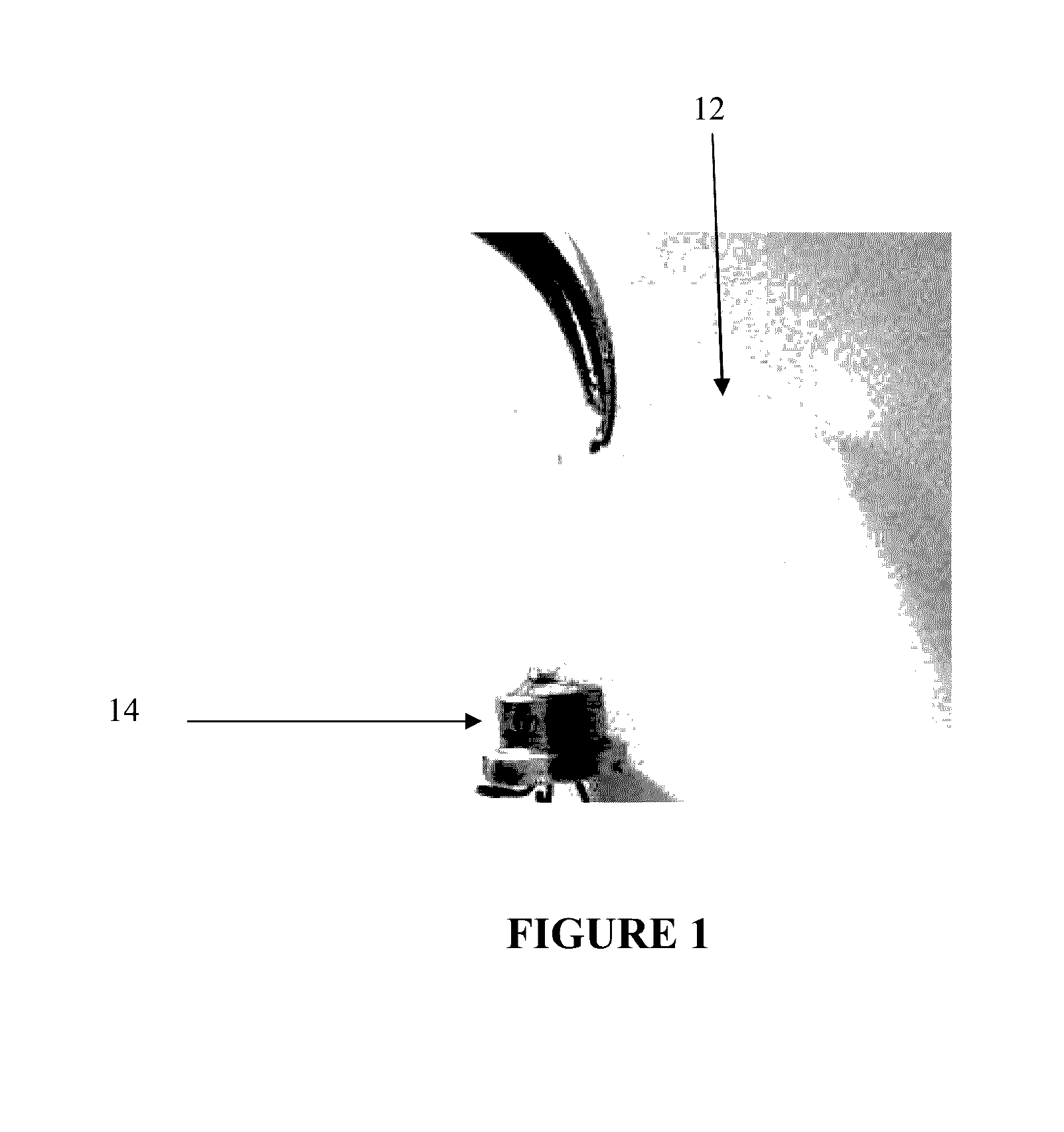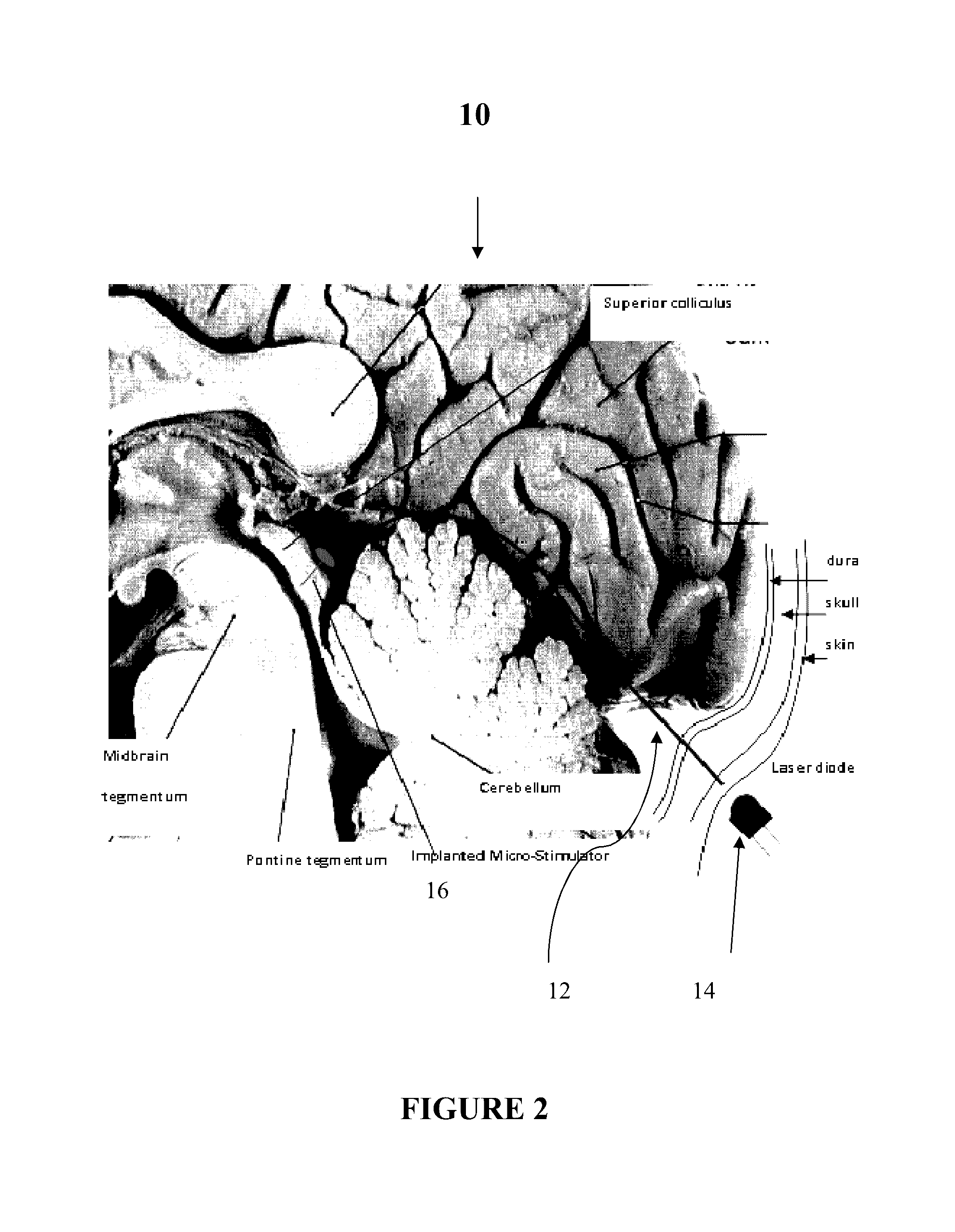Biocompatible and Implantable Optical Conduits
a technology of optical conduits and biocompatible materials, applied in the field of optical conduit assemblies, can solve the problems of microelectrode implants that fail in long term, device failure for chronic implantation, and mechanical stress at the device-tissue interface, and achieve the effect of sufficient efficiency
- Summary
- Abstract
- Description
- Claims
- Application Information
AI Technical Summary
Benefits of technology
Problems solved by technology
Method used
Image
Examples
example 1
[0065]Multi-electrode arrays (“MEAs”) have employed technologies to produce fine 2D and 3D constructs by attempting to optimize the electrode mechanical properties between flexibility and robustness. These MEAs are being used as a research tool in animal models and in some clinical trials. In general, MEAs are well suited for cortical implants where the targeted neural structures are beneath the skull and where they experience relatively small movements. Typically, those arrays cease to function after a few years due to neural tissue scarring that forms around the electrode shanks, and they have to be explanted at the end of the study from the subject. The tethering of the inter-connecting wires or ribbon cables is believed to be the major cause of the on-going tissue response in long-term implants. The rigidity of the shanks and the substrate exacerbate the mechanical stress induced by the tethers.
[0066]Some micro-stimulation ideas in the CNS cannot be tested with chronic implants ...
example 2
A PDMS-Based Optical Waveguide for Transcutaneous Powering of Microelectrode Arrays
[0078]Implantable microelectrode arrays (“MEAs”) usually have on-site electronics that need to be powered, both in neural recording and stimulation applications. Interconnecting wires between implanted electrodes and the outside world constitute a major source of complications. One exemplary solution to this tethering problem is to provide a light waveguide that can collect the optical power transcutaneously and transmit it to the microelectrode array, where it is converted to an electric current. A PDMS-based waveguide was fabricated and its attenuation was found to be 0.36 dB / cm in vitro. The skin flap of the thenar web space in the hand was used to test the photon collection efficiency of the waveguide in diffused light. The efficiency of the waveguide alone was 44 plus / minus 11% (mean plus / minus std) as measured in 13 subjects with different skin pigmentations, excluding the attenuation within the...
PUM
 Login to View More
Login to View More Abstract
Description
Claims
Application Information
 Login to View More
Login to View More - R&D
- Intellectual Property
- Life Sciences
- Materials
- Tech Scout
- Unparalleled Data Quality
- Higher Quality Content
- 60% Fewer Hallucinations
Browse by: Latest US Patents, China's latest patents, Technical Efficacy Thesaurus, Application Domain, Technology Topic, Popular Technical Reports.
© 2025 PatSnap. All rights reserved.Legal|Privacy policy|Modern Slavery Act Transparency Statement|Sitemap|About US| Contact US: help@patsnap.com



